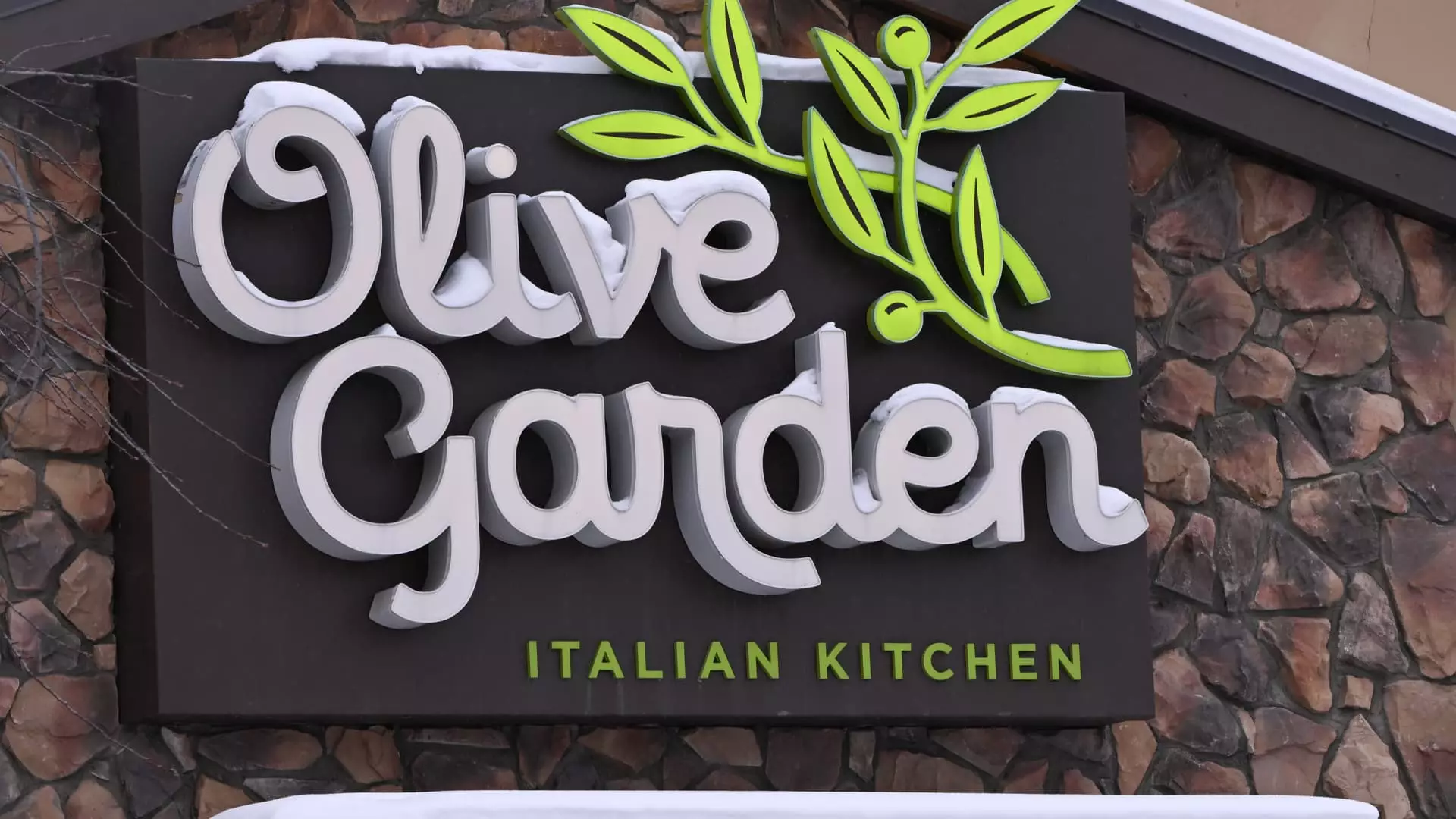Darden Restaurants recently displayed a facade of stability as it announced fiscal third-quarter results that led to a 5% stock surge. The company reported earnings per share of $2.80, slightly above the expected $2.79, but this narrow beat does little to mask a troubling reality. Revenue dropped to $3.16 billion, below the analysts’ expectations of $3.21 billion. Here we see the first alarming red flag: despite the apparent earnings upside, consumer spending has not kept pace with the demands of an inflationary environment that continues to loom over the economy.
Even as Darden maintains its yearly revenue forecast at $12.1 billion, the numbers raise questions about the sustainability of this optimism. The 0.7% increase in same-store sales—far below the anticipated 1.7%—reveals cracks in the company’s core brands. While Olive Garden and LongHorn Steakhouse typically deconstruct industry performance metrics, their lackluster growth—0.6% and 2.6%, respectively—reminds stakeholders that sometimes growth does not come from acquisitions or strategic initiatives, but rather from an inherently resilient consumer base.
A Weather Excuse or Genuine Consumer Shift?
Darden’s executives attributed the quarter’s shortcomings to unfavorable weather, particularly low temperatures and snowstorms. Is manipulating weather patterns the new strategy to excuse underperformance? While it is true that climate can influence consumer behavior—especially in casual dining—reliance on such justifications sounds alarm bells. Indeed, CEO Rick Cardenas commented on the absence of a strong correlation between declining consumer confidence and dining out.
But are we truly convinced that pent-up demand persists as disposable income flourishes? Given that only lower-income consumers, those earning under $50,000, have curtailed dining expenses, it forces one to ponder: is the restaurant economy truly thriving, or are its operators merely papering over cracks? This juxtaposition reveals a nuanced narrative—not merely a weather disruption but an indication of seismic shifts in consumer spending habits.
Delivery: The Sweet, Tempting Trap
When analyzing Darden’s performance, we must pivot to the recent rollout of delivery services, particularly through partnerships like Uber Direct. Olive Garden has noted substantial growth in delivery volume—accounting for about 2.5% of total sales—as delivery customers tend to spend more compared to those opting for curbside pickup. While this uptick may indicate a glimmer of hope, it’s crucial to interrogate whether this model can truly replace the robust dine-in experience that has been the backbone of casual dining.
Furthermore, the expansion of delivery raises concerns about sustaining profitability. The logistics of delivery can be voraciously expensive and often erode margins. Although growth in delivery metrics seems promising, the operational ramifications may lead to resource depletion rather than the anticipated boom in sales. The initial forward momentum might conceal deeper operational risks that could hinder long-term profitability.
Reflections on Consumer Spending Behavior
Another layer of complexity lies in the evolving behaviors of consumers. Despite taking a slight hit in the face of economic uncertainty, the casual dining sector has historically demonstrated resilience when economic conditions improve. Cardenas claims that as long as incomes rise faster than inflation, consumer spending should follow suit. However, this conviction overlooks multiple uncertainties surrounding current monetary policies and inflationary trends that could impact consumer habits for years.
When both income levels and inflation are volatile, encouraging reports like those shared during quarterly earnings calls come across as an attempt to reassure investors while glossing over systemic issues. Can Darden sustain an optimistic outlook without understanding the shifting sands of consumer behavior? While historical trends may suggest that diners frequently return, this market is no longer the same as it was pre-pandemic.
The Burden of Fine Dining
Finally, Darden’s fine dining segment, encompassing brands like The Capital Grille and Ruth’s Chris, reported a decline in same-store sales of 0.8%. The optimism harbored during the holiday flavor may soon dissipate, evidenced by caution expressed by CFO Raj Vennam regarding “persistent check management.” The fine dining sector, once a bastion of profitability, is now buckling under the weight of consumer reticence to spend lavishly.
This segment raises further inquiries about the company’s diversification strategy. As the market adapts to changing dietary habits and preferences driven by health consciousness, the burden on fine dining may grow heavier. Darden needs not only to understand its customers but also adapt to their evolving lifestyles to remain competitive.
Ultimately, the posh veneer of Darden’s quarterly performance may offer fresh highs for investors, but beneath lies a complex web of challenges that demand serious navigation in an era marked by shifting consumer dynamics.

